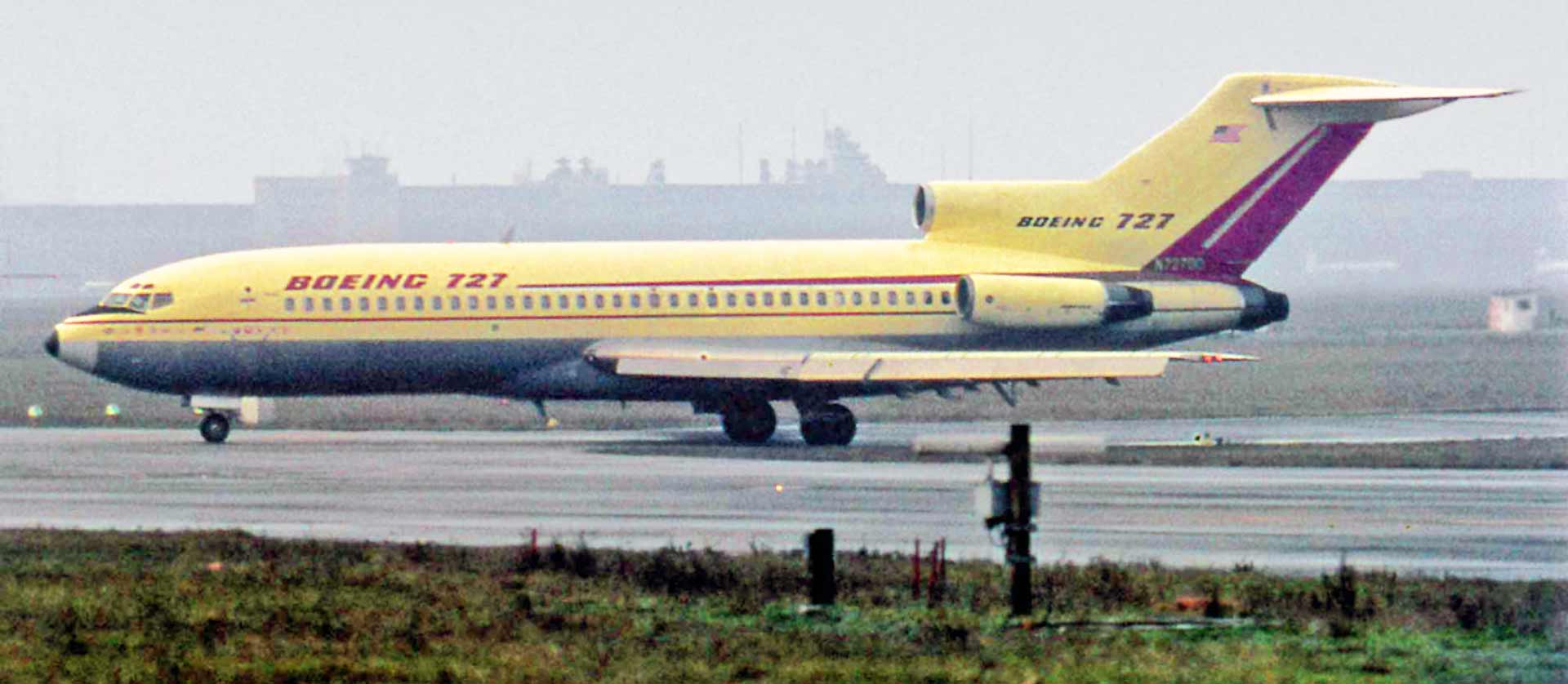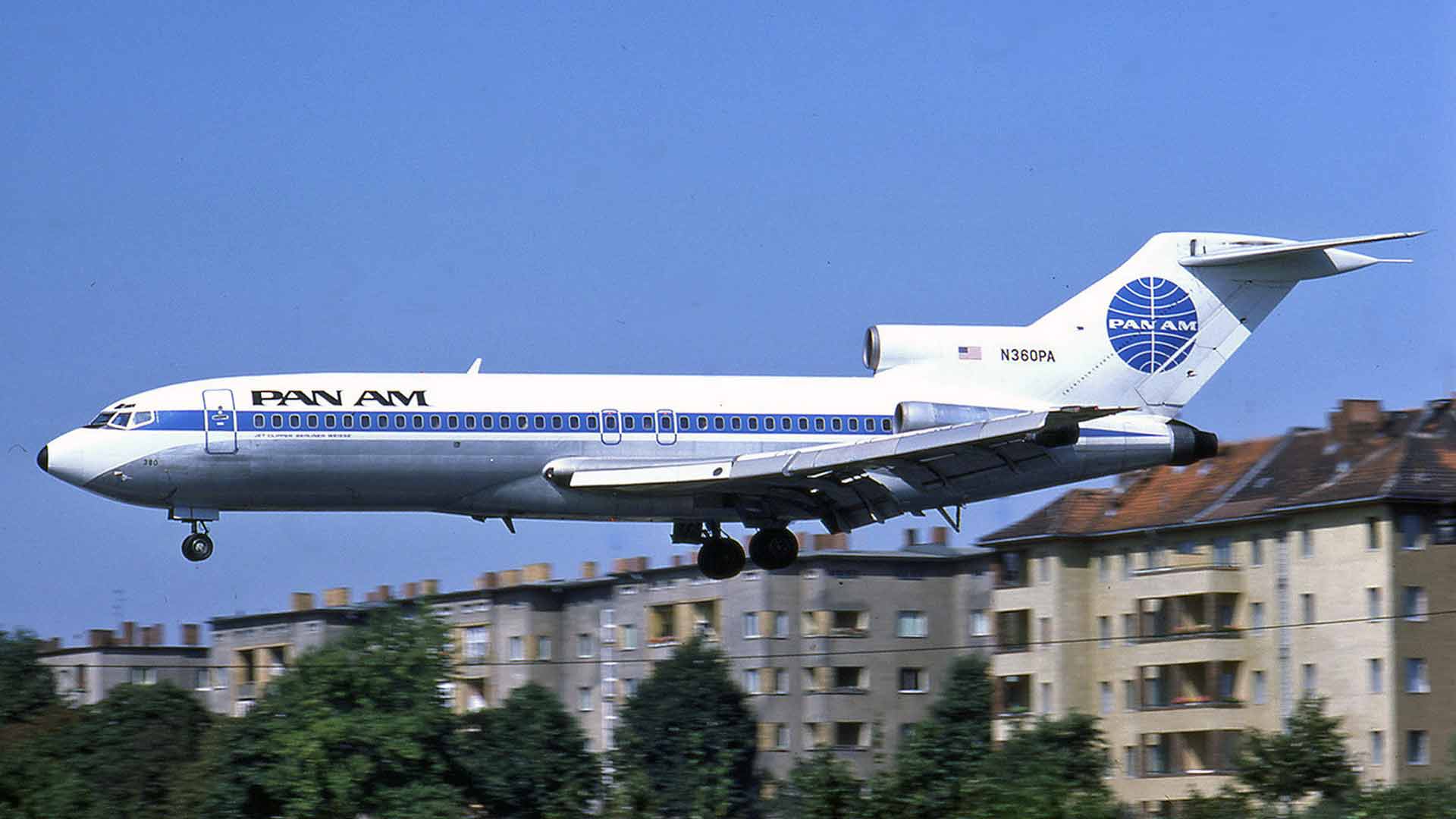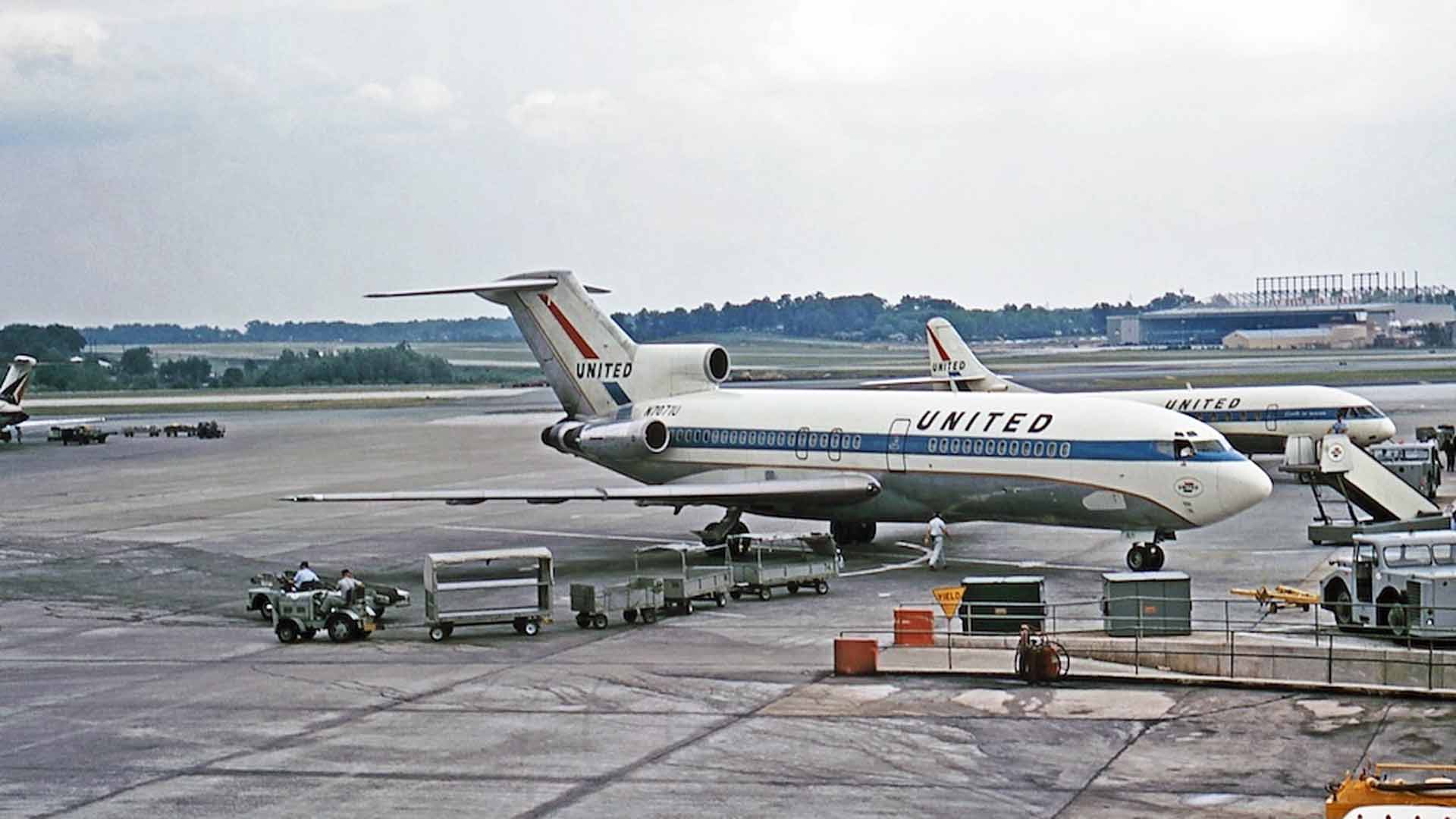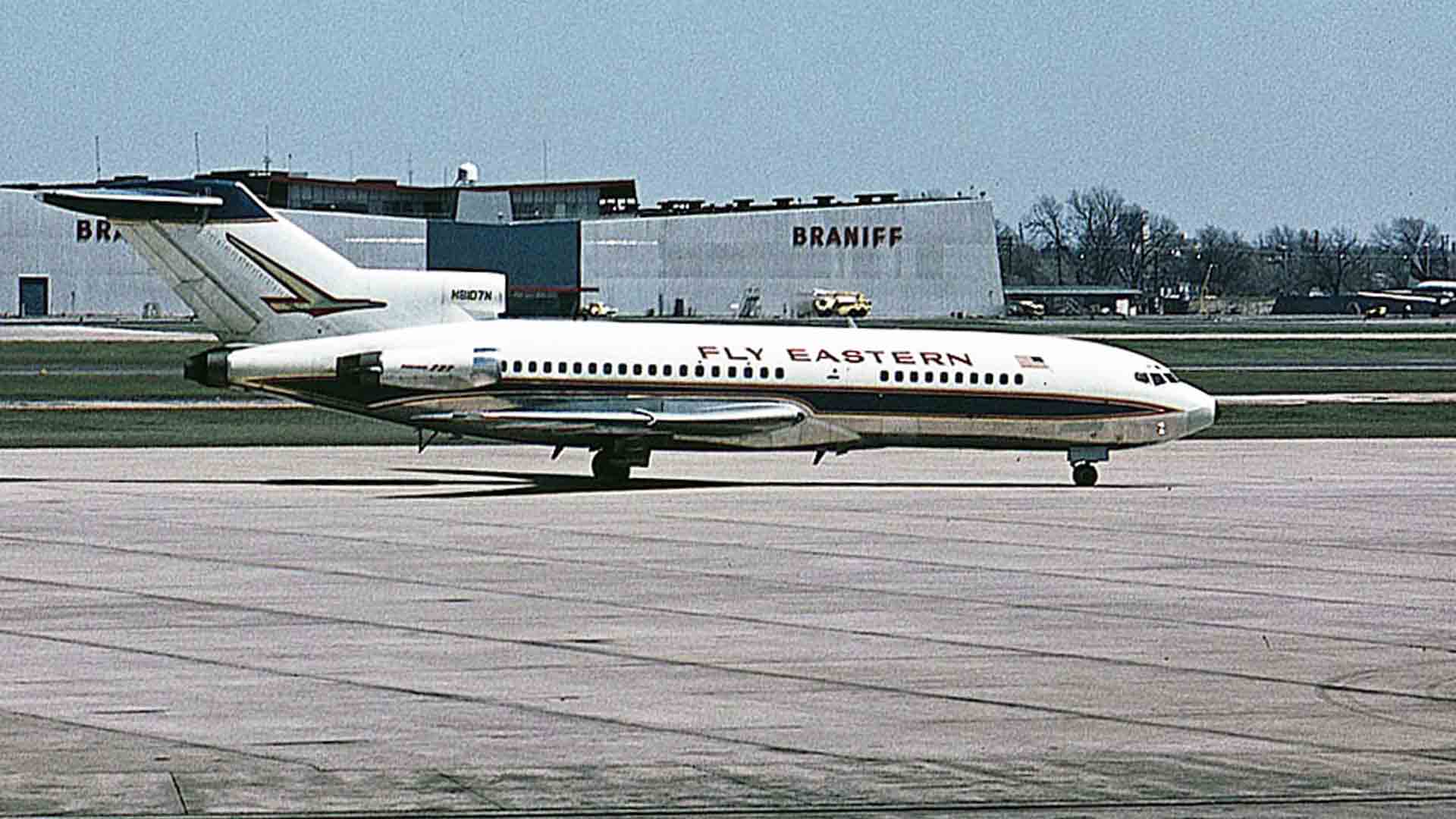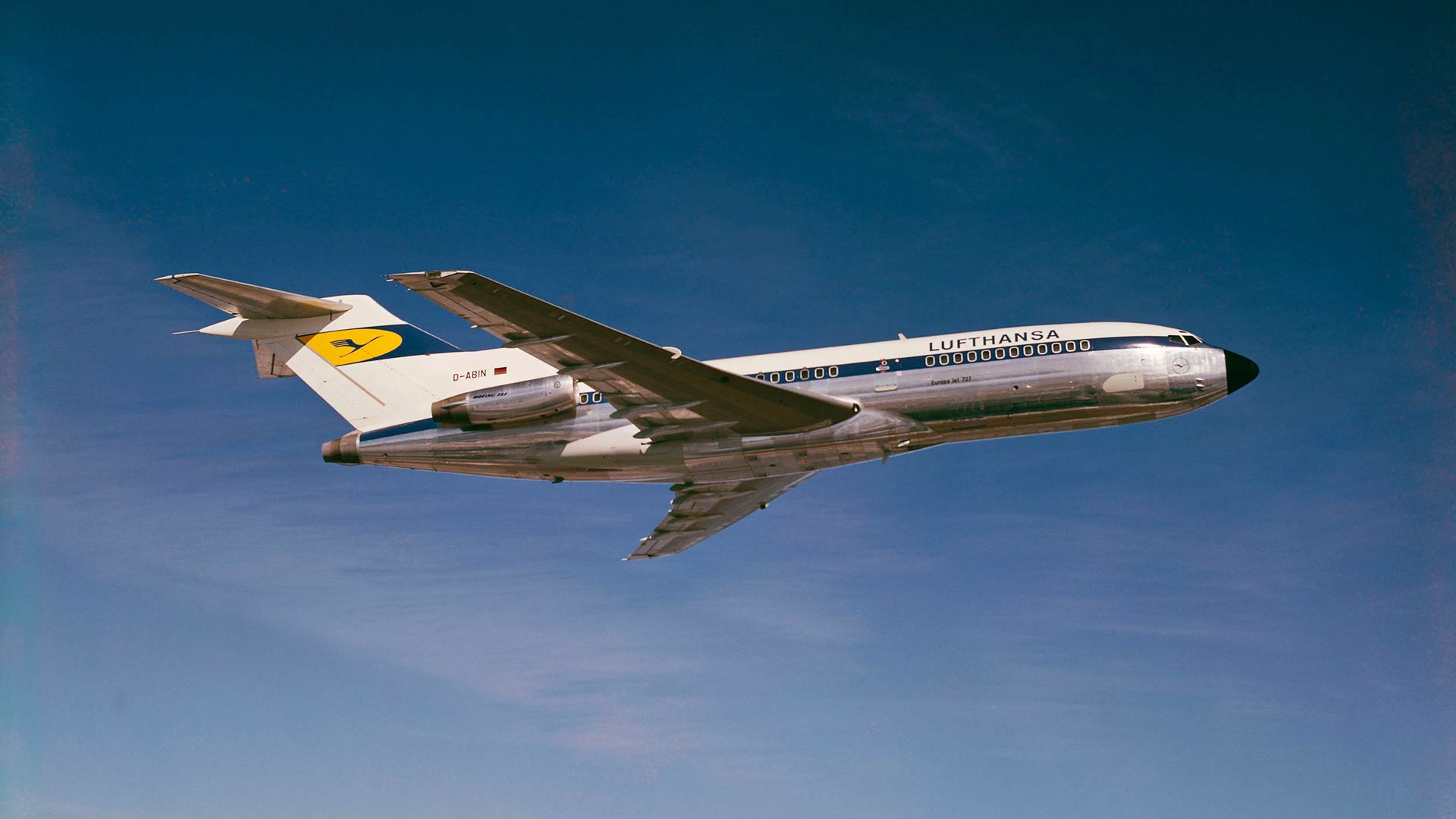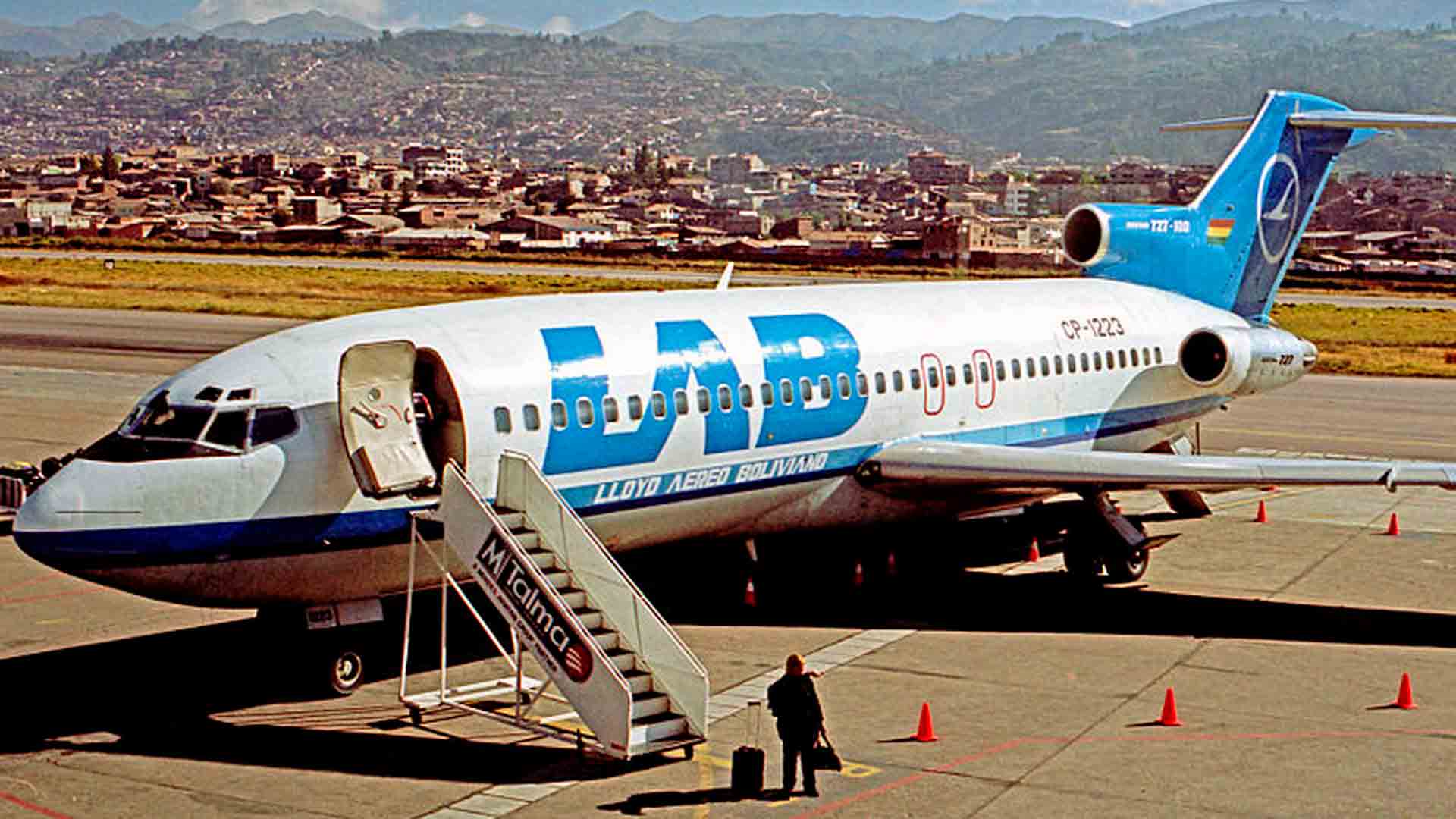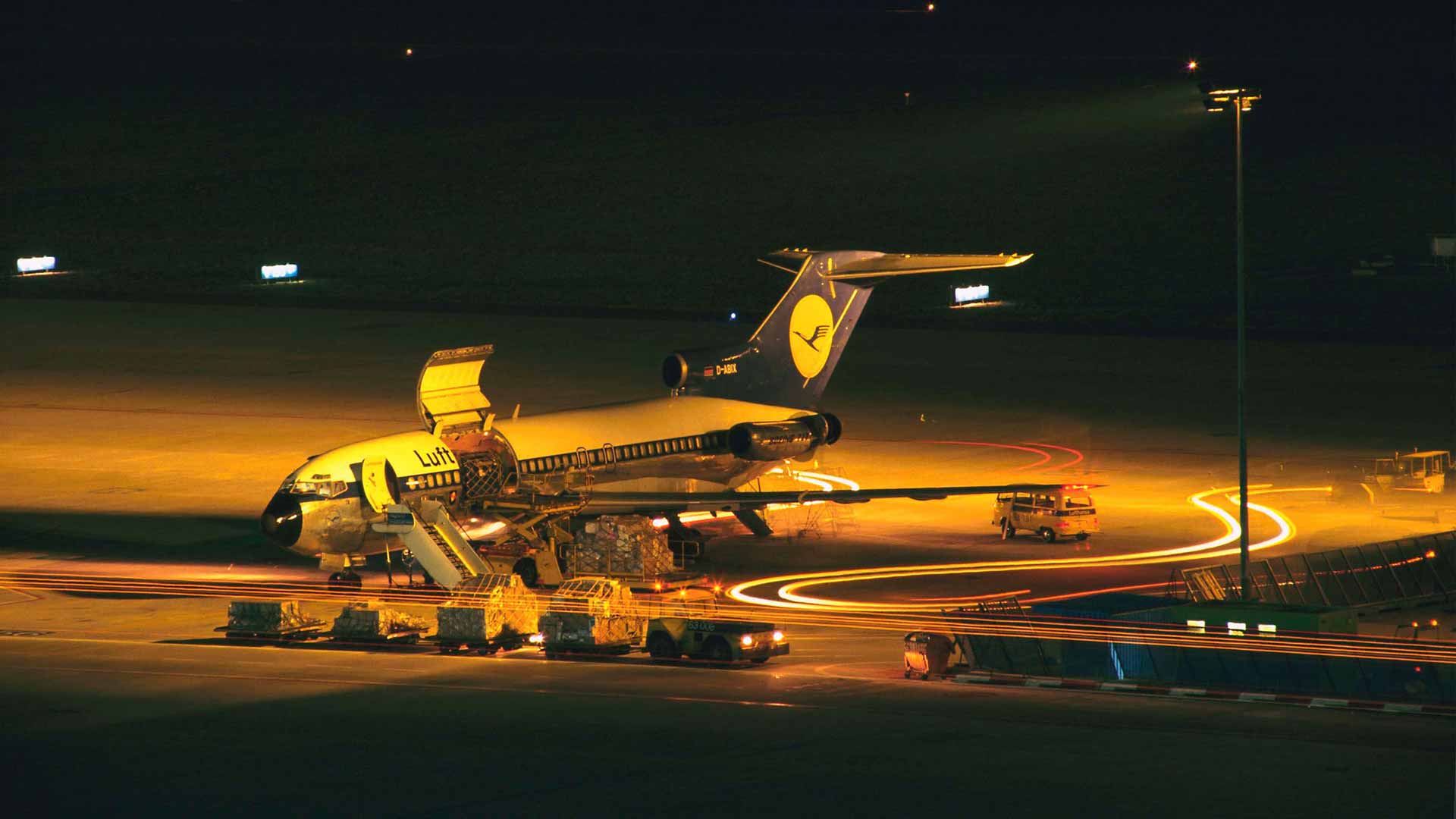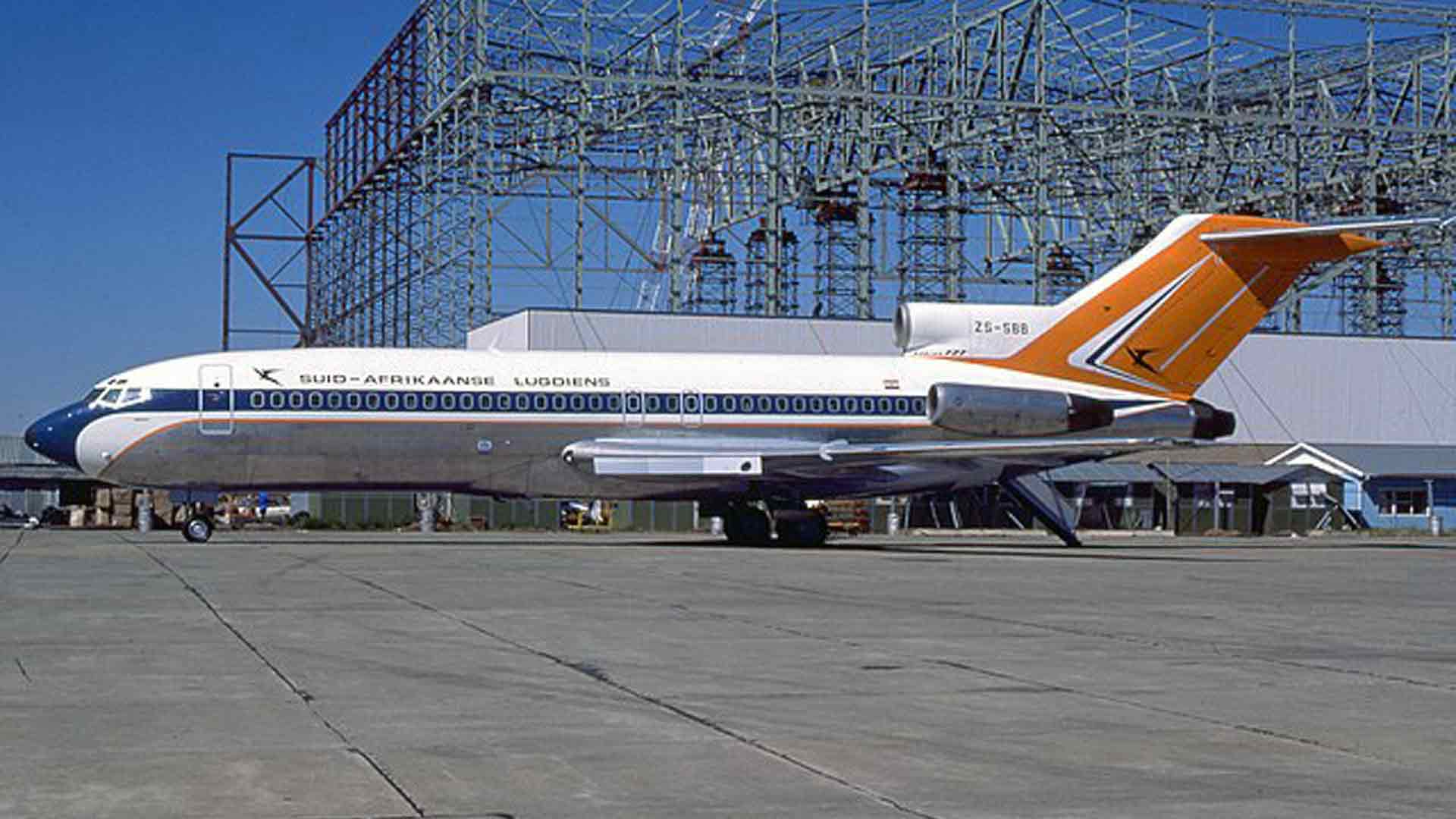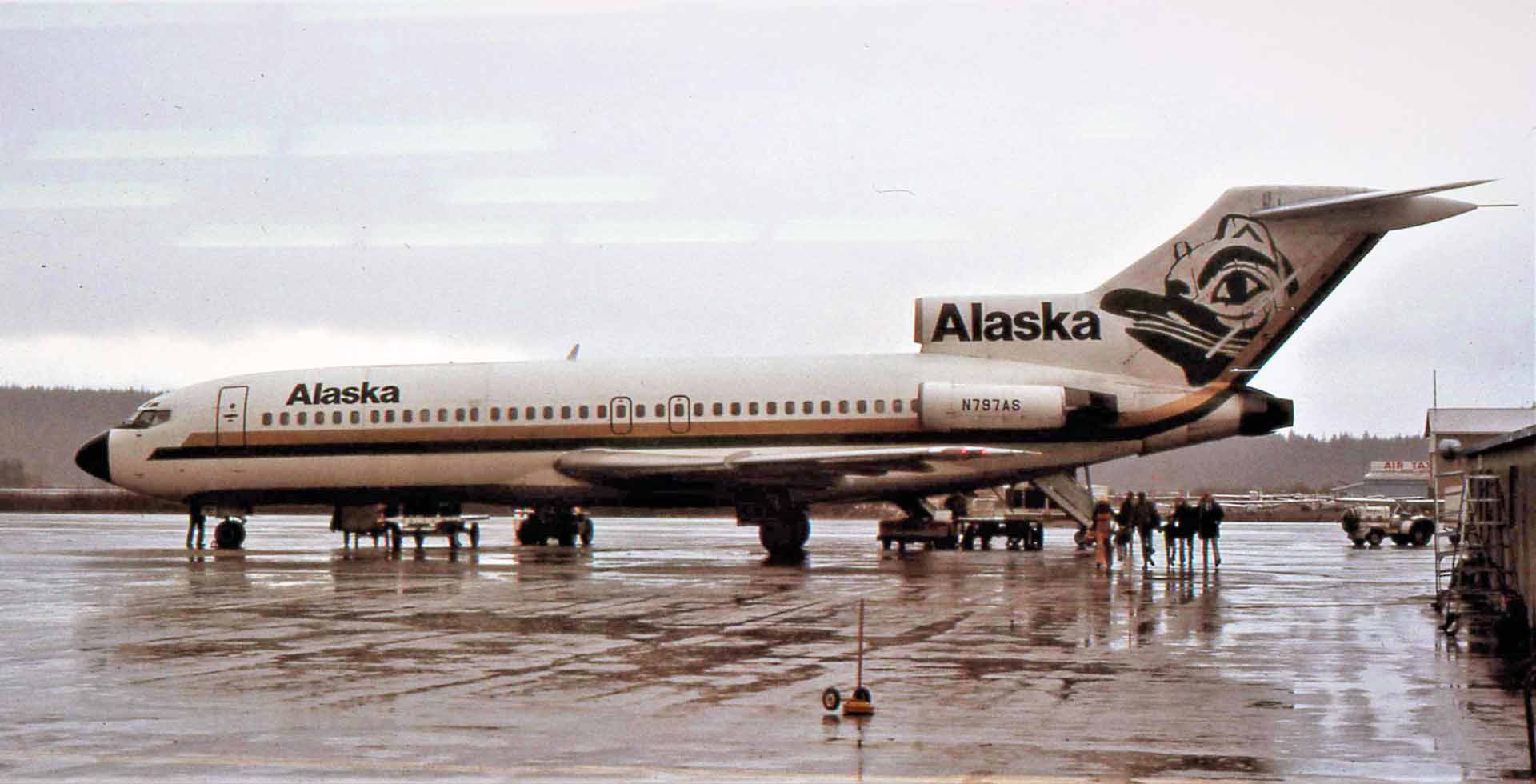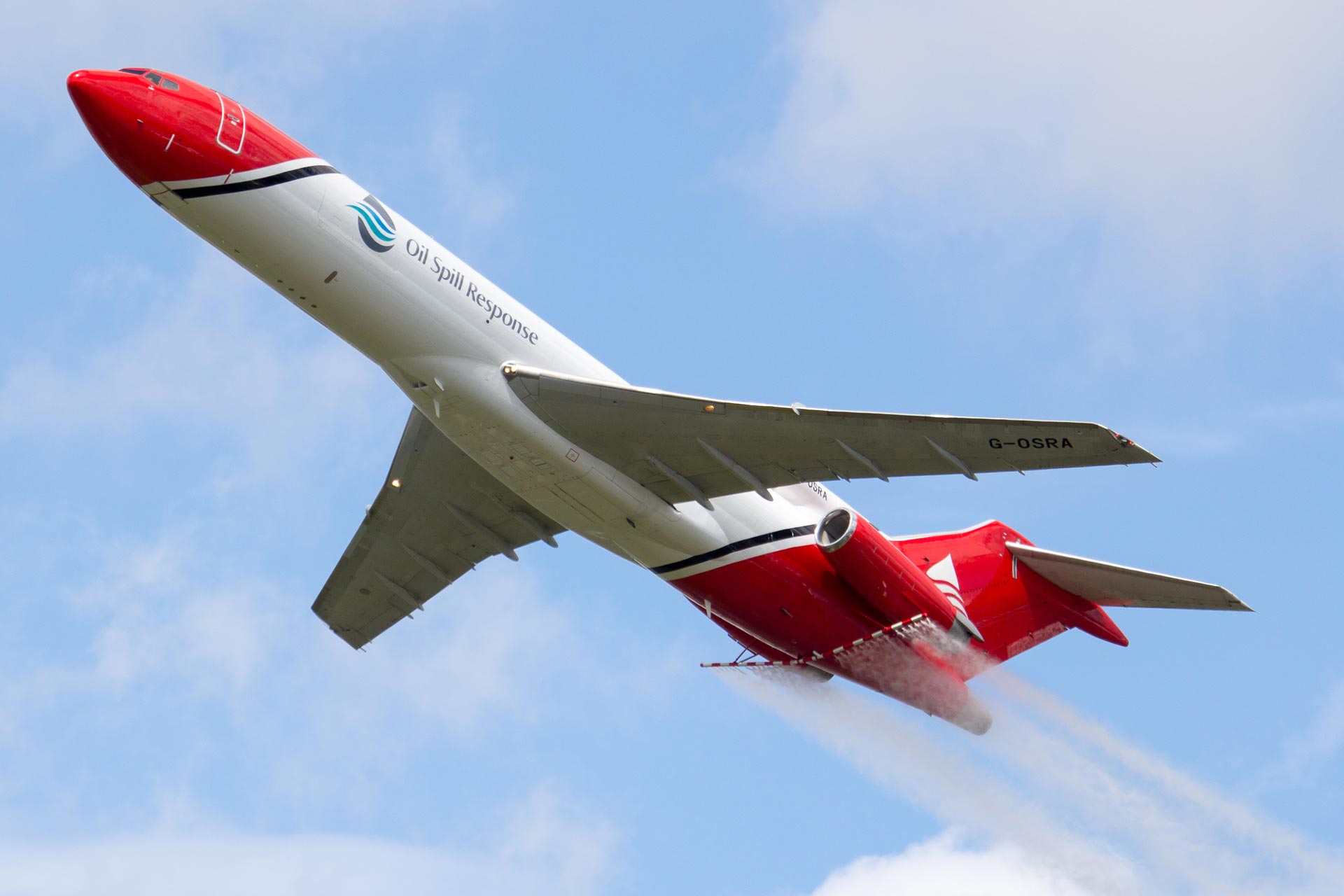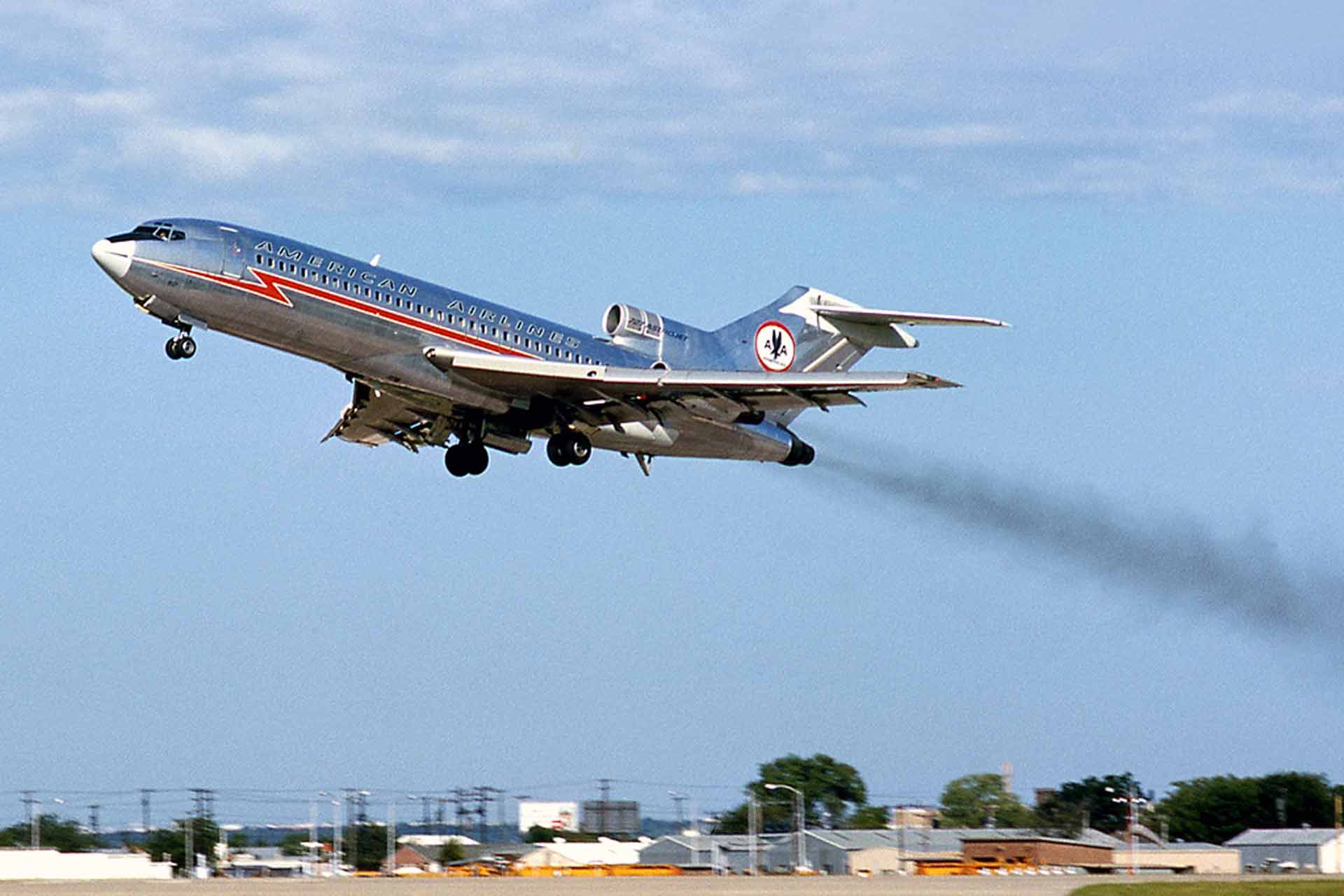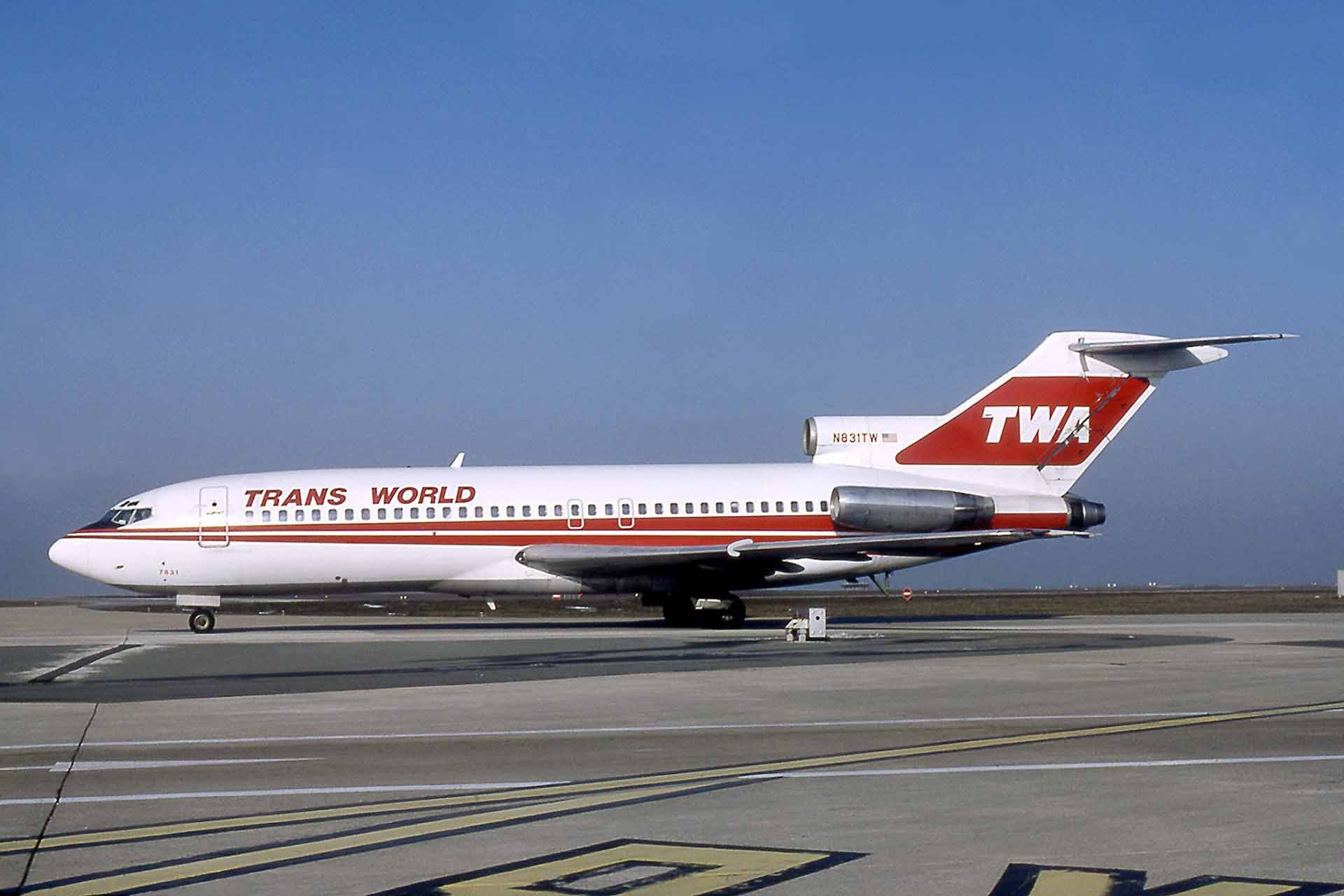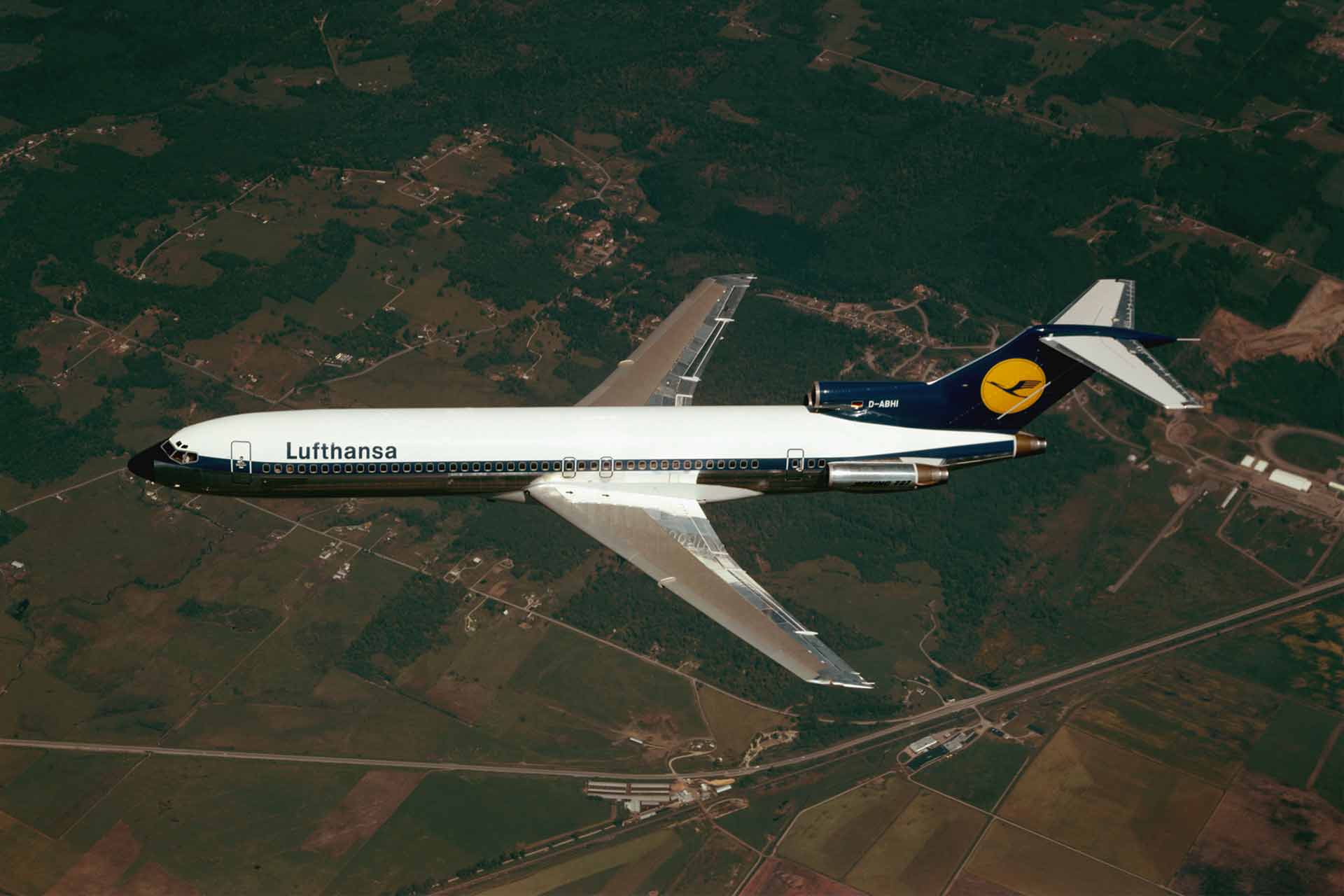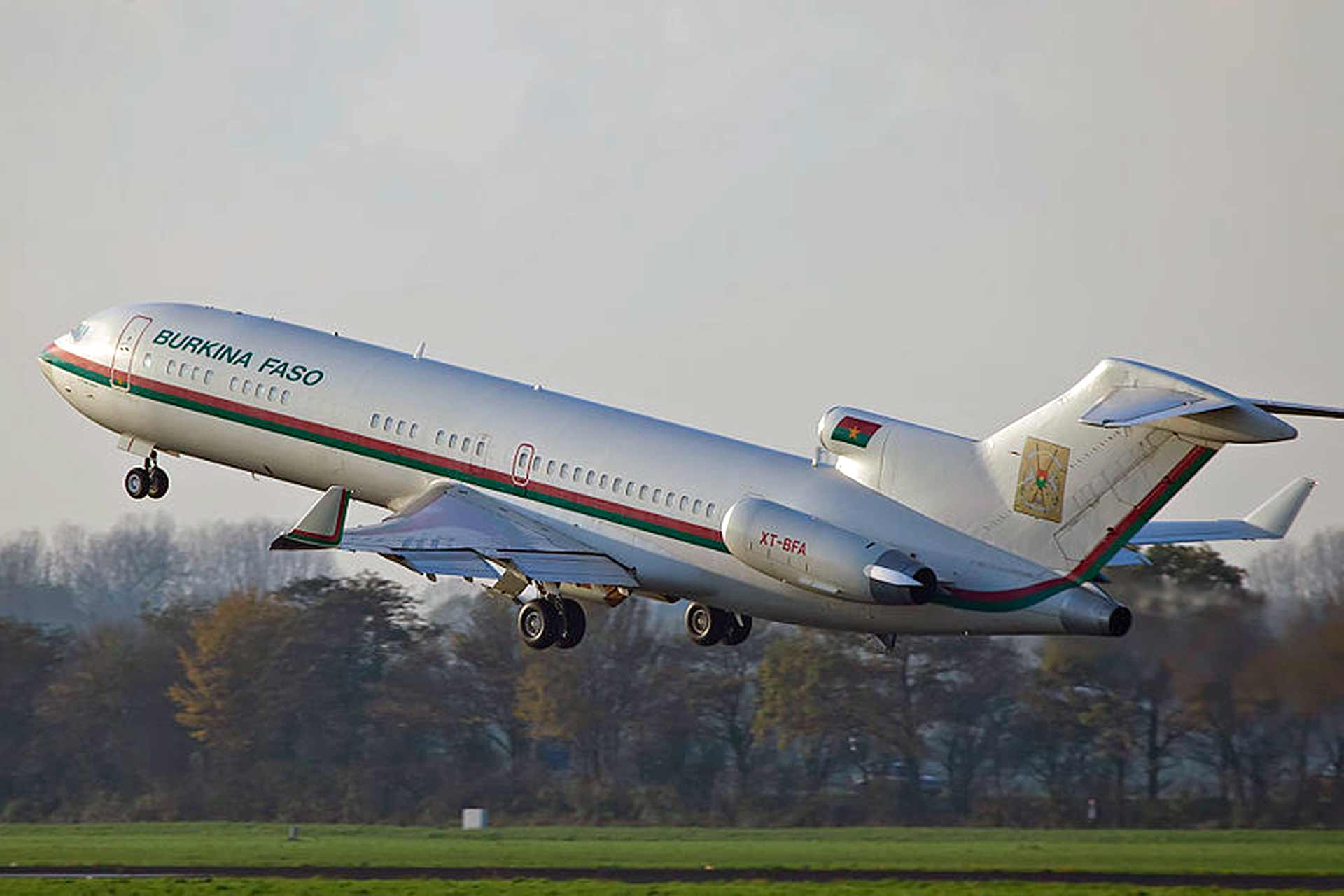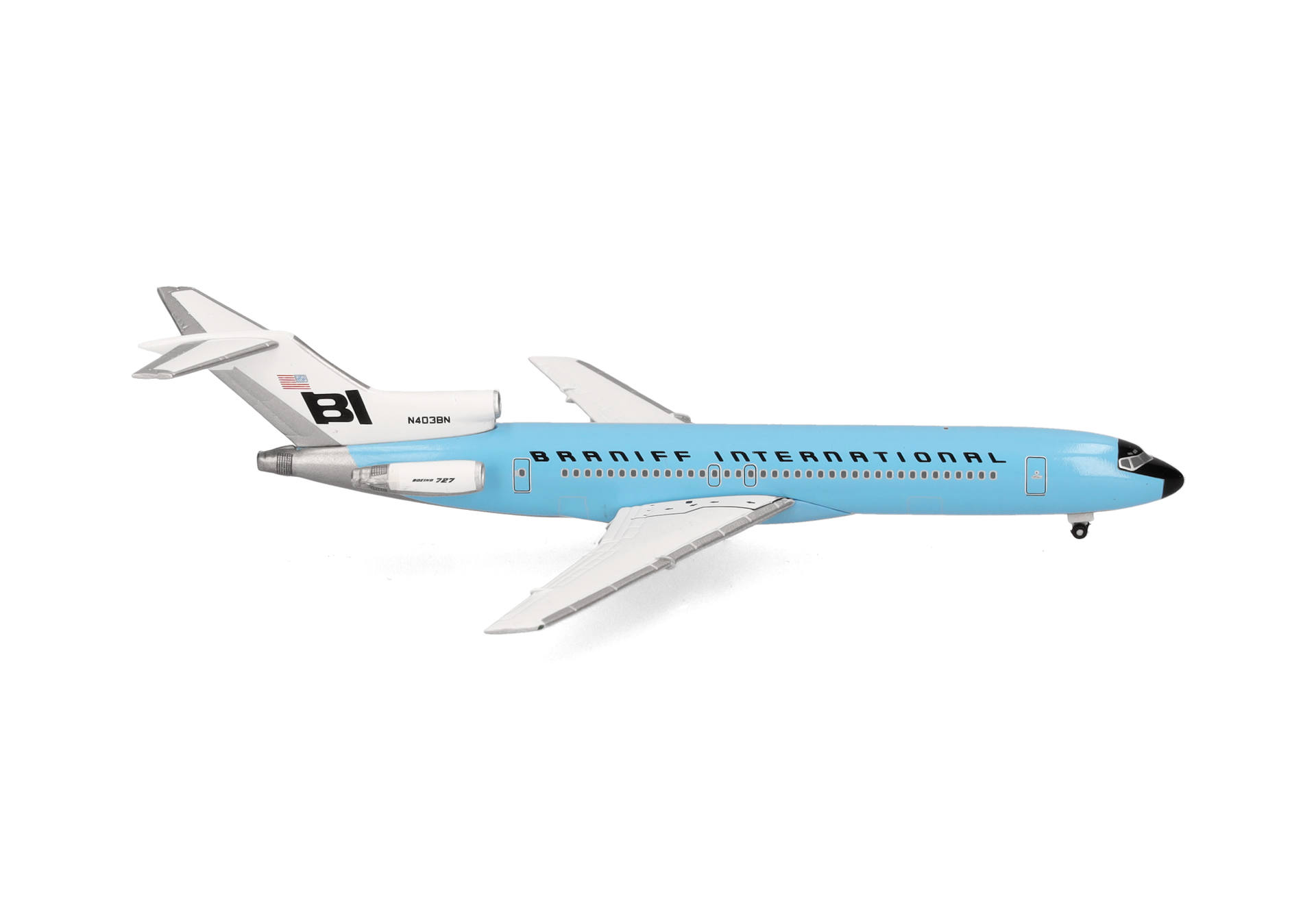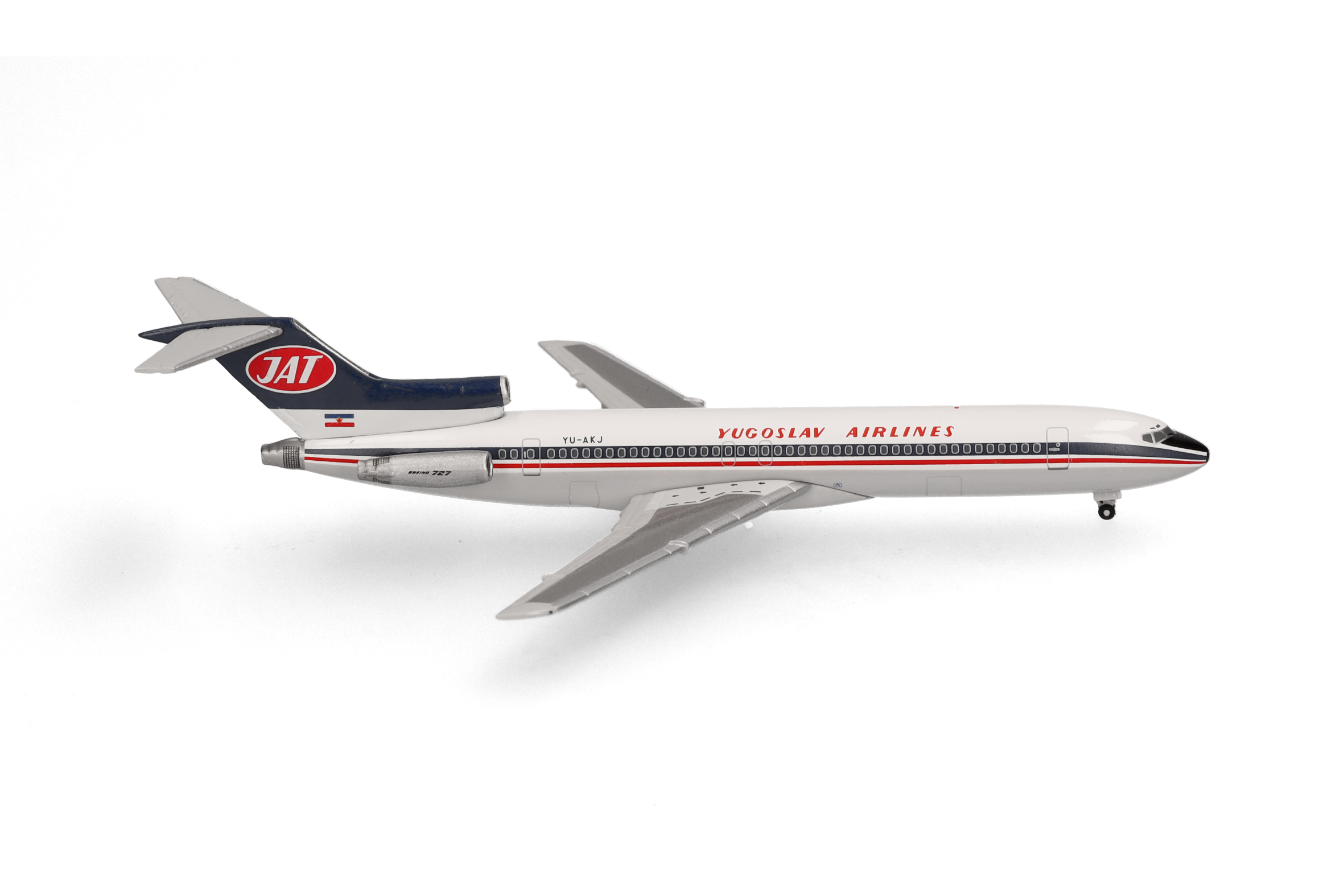Bullseye from the word go
For aviation enthusiasts, the 1960s were probably one of the most interesting decades, both technically and socially. Technically, these years saw the transition from propeller propulsion to jet engines. As a result, the airplane evolved from luxurious transport for the privileged few to a means of mass transportation that enabled even the less well-heeled to afford air travel. The Boeing 727 helped usher in this change. The elegant three-engine plane was the best-selling airplane of its time and remained on the market for a long time.
At the beginning of the 1960s, the logistics of long-haul routes had long since been decided in favor of air transport. A competition now began between concepts on medium-haul routes of up to 3,000 kilometers, between turboprops and pure jets. Turboprops had the economic advantage, but jets had more prestige and higher speed. In Europe, the De Havilland “Trident” and in the USA, the Boeing 727, two similarly designed jets were developed to combine the advantages of both concepts. In one case this worked, in the other it did not. De Havilland, later Hawker Siddeley, concentrated on a single requirement profile - that of the state-owned British European Airways (BEA). At Boeing, they were clever enough not to concentrate on just one customer, but to consider the requirements of other airlines as well.
In 1965, Pan Am introduced the new “Jet Clipper 727” on its “Intra German Services” on its routes to and from (West) Berlin-Tempelhof. Initially, twelve Boeing 727-21s were stationed there. Photo: Ralf Manteufel
In addition to the major US carriers, in Europe it was mainly Lufthansa German Airlines that exerted influence on the development of the 727 at an early stage. In particular, it was regional airports and vacation destinations that could not be served by jets at that time, mainly due to a lack of sufficiently long runways – and even if they could, the rest of the infrastructure was totally overwhelmed. Boeing came up with the ingenious idea of developing a derivative for regional routes based on the existing 707 and 720, which could be operated by somewhat smaller and yet more cost-effective units, while guaranteeing as much commonality of parts as possible. This was not easy, as their aircraft design required considerable adjustments. The most important of these were take-off and climb performance, but especially approach characteristics, as the 727 would also have to be able to cope safely with runways of less than 2,000 meters.
United was the first airline in the world to use the 727 from 1963. A total of 126 of the original -22 series alone were in service until 1993. Photo: John Proctor_GNU
Revolutionary wings
The most important features of the 727 were not the new engines, but its wing geometry. The arrangement of the three engines at the rear, with the middle one housed in the vertical stabilizer, gave the developers a great deal of freedom when designing the wings. High-lift aids were required, which had not existed before. So-called Krüger flaps and three extendable slats were installed on the front wings. Developed in 1943 by German designer Werner Krüger, the former were located near the fuselage on the front underside of a wing and were therefore also known as nose flaps. They supported the effect of classic slats, but were simpler in design. Triple split flaps were added at the trailing edges. This allowed the load-bearing wing area to be increased by 25 percent in slow flight. In addition, there were spoilers on the wing which, together with the reverse thrust of the engines, completely eliminated lift. This resulted in a minimum landing speed of just under 230 km/h, which meant that the 727 could be brought to a halt after just over 1,400 meters if necessary. This fulfilled a very important condition for serving New York's La Guardia Airport, for example.
On February 1, 1964, Eastern Air Lines put its first 727 into service shortly after United. 407 of the original version, later designated the 727-100, were sold. Between 1964 and 1991, Eastern operated 75 of the 727-25 series alone. Photo: John Proctor_CC
Lufthansa introduced eight Boeing 727-30s in 1964 as the world's first export customer and significantly modernized their corporate design for the occasion. This was followed by a further eight units, besides eleven -30QC combi freighters. Photo: Boeing
Jet-powered on short- and mid-haul routes
The rest is history: With a maximum range of 3,000 kilometers, a cruising speed of 920 km/h and a typical configuration for just under 100 passengers in two-class seating, the 727 made inroads into the highly popular short and medium-haul segment worldwide, which until then had been dominated by propeller-driven aircraft. Depending on the model it outclassed, the 727 shortened travel times by up to 30 percent, and significantly reduced maintenance costs. Fuel costs, which were still extremely low in 1963, played a rather subordinate role, but this was to change dramatically ten years later. The second important factor was the new Pratt & Whitney turbofan engine. P&W had developed various versions of the JT-8D turbofan, which was first used on the French Aerospatiale Caravelle 10 in 1962, then in significantly higher numbers on the 727 in 1963, and in even higher numbers on the Douglas DC-9 in 1964 and four years later on the Boeing 737. The JT-8D thus became practically the standard engine on all short- and medium-haul jets from the 1960s until well into the 1980s.
In South America, the 727s were particularly popular due to their excellent take-off and landing characteristics at high-altitude airports such as La Paz. The Bolivian LAB set a world operational record with a -100C from delivery in 1970 until its retirement in 2015. Photo: Dennis Archer_CC
The big moment came on February 6, 1963 - the first prototype took off from the factory airport in Renton, just outside Seattle, on its successful maiden flight. The certification program was completed with a total of four aircraft, and after just ten months the 727 received its type certificate on 20 December of the same year. This was followed by a number of demonstration flights around the world, including for Pan Am to the local Tempelhof Airport in West Berlin, which required very special procedure due to the political conditions and its proximity to the border with East Berlin.
A typical scene at a German airport in 1969: a 727-30QC that had just landed on a scheduled passenger flight was quickly converted into a freighter to transport goods to the hub in Frankfurt on a nightly mail and freight service flight. Early the next morning, it resumed passenger service. Photo: Lufthansa
Successful development
The whole thing took place largely out of the public eye, but of course under the close scrutiny of customers, some of whom were heavily involved in the development of the trijet. These were primarily the major US “trunk” carriers, such as United, American, Eastern, and Continental, but also Lufthansa and Japan Air Lines. The original 727-0 version had three P&W JT-8D-1 turbofans, each with 62 kN of thrust, sufficient for all basic requirements, but only a range of just under 2,000 kilometers at full payload. In principle, this was not enough, which is why the -100 version was added in 1966, which had significantly greater range thanks to more powerful engines. The initial purchase price was just 4.7 million US dollars, but rose to 29 million in the course of the many improvements and inflation.
South African Airlines übernahm 1973 die letzte 727 in ihrer Ur-Version -100C. Danach trennte Boeing die Wege zugunsten der kleineren 737 und der größeren 727-200, mit der erst der wirkliche Erfolg des berühmten Trijets eingeleitet wurde. Bild: Clipper Arctic_CC
At the same time, Boeing developed the cargo -C version and the quickly convertible -QC combi version, first introduced by Northwest Airlines. The -QC could be converted from a passenger aircraft to a freighter in just 30 minutes. All seats were mounted on pallets that had the same dimensions as cargo pallets. They were loaded and unloaded through a large cargo door on the forward port side. 111 such -QCs with a maximum payload of a good 17 tons were sold. The cargo-only -C version could carry up to 22 tons. In addition, there were a number of special versions and conversions over the production period of the -100 stretching from 1963 to 1972.
With this 727-90C registered under the registration N797AS, Herpa will begin its homage to the famous Boeing trijet in January 2024. In 1964, Alaska Airlines introduced the 727 in its “totem design” (item no. 537 292). Photo: Stephen West_CC
Even though the first oil crisis was still to come in 1972, the original version of the 727 was already proving to be somewhat problematic in terms of its operational costs. When Boeing launched the smaller but similarly powerful and significantly more economical 737 in 1968, and uprated range with the significantly improved and larger 727-200, there was no longer any room for the 727-100. However, this decision marked the beginning of its real success.
[1] Boeing 727-200RE G-OSRA, Photo: Oren Rozen_CC
[2] Boeing 727-23, Photo: Garrard-2
[3] Boeing 727-31, Trans_World_Airlines (TWA), Photo: Michel Gilliand_GNU[4] Boeing 727-230B Lufthansa D-ABHI, Photo: Lufthansa
[5] Boeing 727-200RE Burkina Faso, Photo: Maarten Visser_CC
Text: Fritz Gratenau
Titlephoto: Ralf Manteufel
Zahlen, Daten, Fakten
Manufacturer: The Boeing Company, Seattle/Wa., USA
Type: 727-0
Powerplant: 3 x PW JT8D-1
Power: 3 x 62 kN
Cruising speed: 930 km/h
Max. take-off weight: 58,950 kg
Range: 2,000 km at max. load
Max. Capacity: 131 seats / 22 tons of Cargo
Price: US-$ 4.7 Mio. (1963)
Produced: 571

